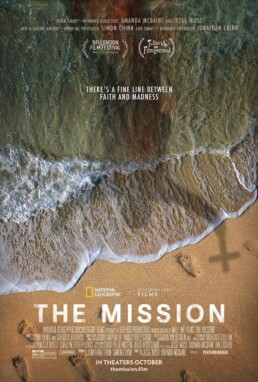‘The Mission’ Investigates a Fatal Sermon
John Chau's naive religious beliefs turned his final sermon into a self-inflicted suicide mission, as explored in 'The Mission.'
The Broadway musical “The Book of Mormon” is highly praised for its tongue-in-cheek mockery of well-meaning but ignorant religious zealots. As the story goes, a young and naive Mormon missionary enters into unwelcome territory with his Godly paraphernalia in hand, determined to convert an entire Ugandan tribal community into followers of the Church of Jesus Christ of Latter-day Saints. The musical is outrageous, flamboyantly exaggerated, and makes for the perfect date night activity. However, after American missionary John Chau died during an attempt to proselytize his beliefs to the isolated and highly unpredictable Sentinelese tribe, the plot of the silly musical that felt so farfetched suddenly feels much darker.
Emmy-winning directors Jesse Moss and Amanda McBaine (Boys State) bring the tragic story of John Chau’s fatal sermon to the screen in The Mission. In 2018, John’s death made headlines around the world when he was killed with bows and arrows at the hands of the Indigenous people who live on the remote North Sentinel Island. The Sentinelese are widely considered to be among the most vulnerable and dangerous in the world, and history has shown that they don’t take kindly to foreigners entering their territory. John saw these obstacles as all the more reason to venture, illegally, to the remote island. He viewed the Sentinelese as victims of Satan’s last stronghold, and he was determined to be the one who could convince them to follow God and was willing to die trying.
The backbone of the documentary relies on John’s posthumous diary, which was turned over to his family after his death. Journal entries are read aloud by a voice actor who captures John’s wide-eyed optimism and free spirit mentality. “If God is for you, who can be against you,” he writes–an eerie foreshadowing of how his false sense of security put him in a deadly situation. Interviews with his family and friends tell a similar story of a young man who was adventurous, self-sufficient, and deeply committed to his church. Limited archival footage also means that the dependency on video archives is crucial, and animation is used to depict scenes that could otherwise not have been shown.
What makes John’s story all the more heartbreaking is his unintentional arrogance and assumption that he was invincible under God’s eye, which turned his final sermon into a self-inflicted suicide mission. Experts and religious leaders comment on the fact that “people who exist out of time”–much like the Sentinelese–is a seductive narrative to Westerners who feel compelled to push their beliefs and societal structure onto them. But not everybody needs or wants “saving.”
On one hand, John’s Evangelical Christian faith gave him purpose. On the other, his dedication was responsible for his death. The filmmakers bring up both sides of this conundrum, making it difficult to confidently place blame on any one person. Was he brainwashed into thinking he could actually save these people? Did he literally believe he was a messiah? And if so, did the church encourage these delusions? John’s story is harrowing because of how unavoidable the outcome could have been, making The Mission a fascinating albeit heartbreaking watch.
National Geographic Documentary Films / 103 mins / USA / 2023 / English, Latin, Piraha, Hindi, Sarikoli, Onge
Morgan Rojas
Certified fresh. For disclosure purposes, Morgan currently runs PR at PRETTYBIRD and Ventureland.


